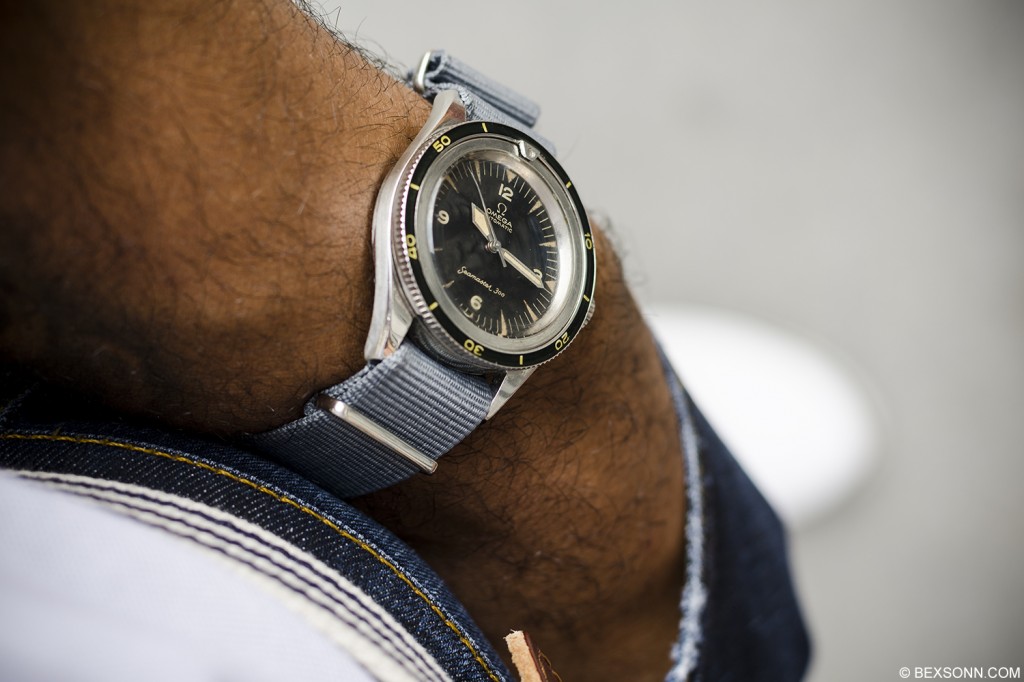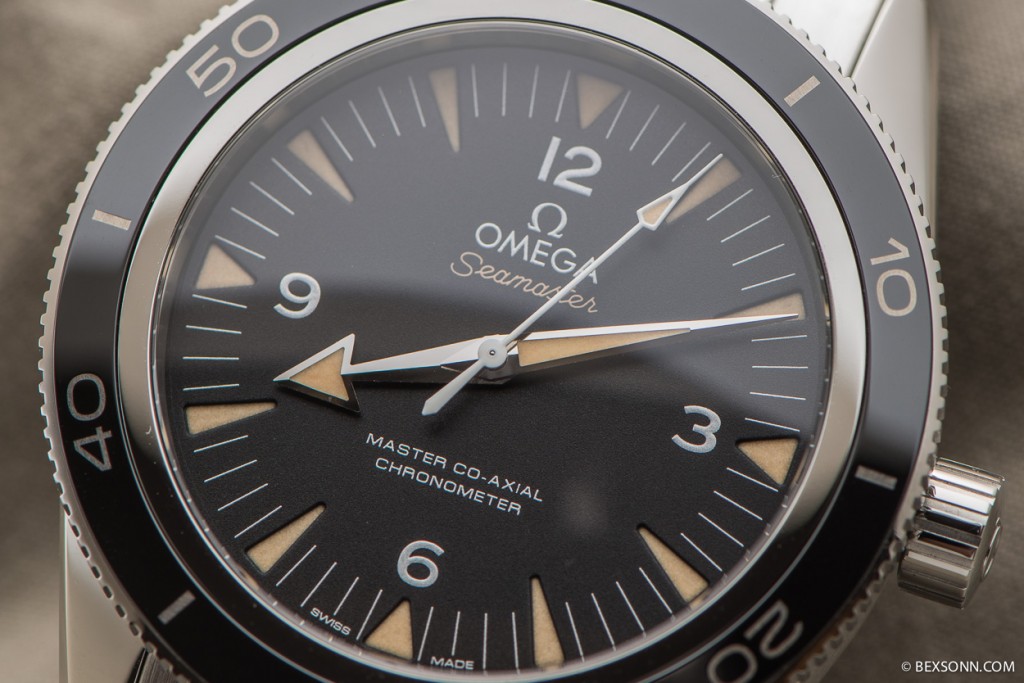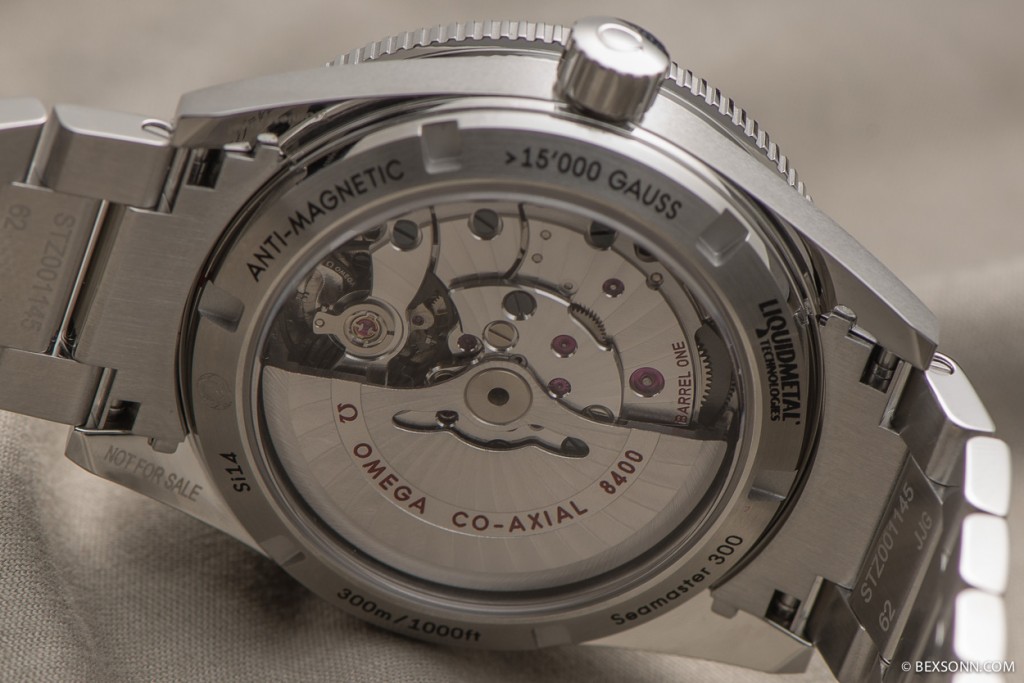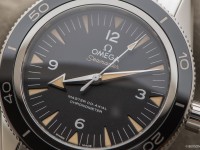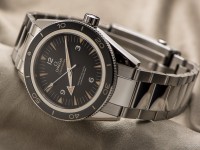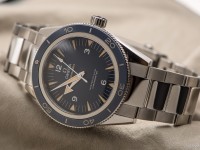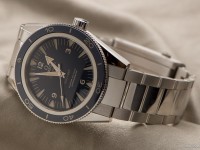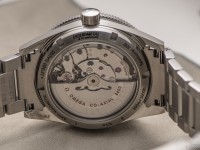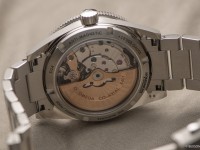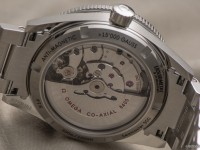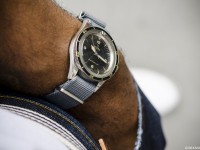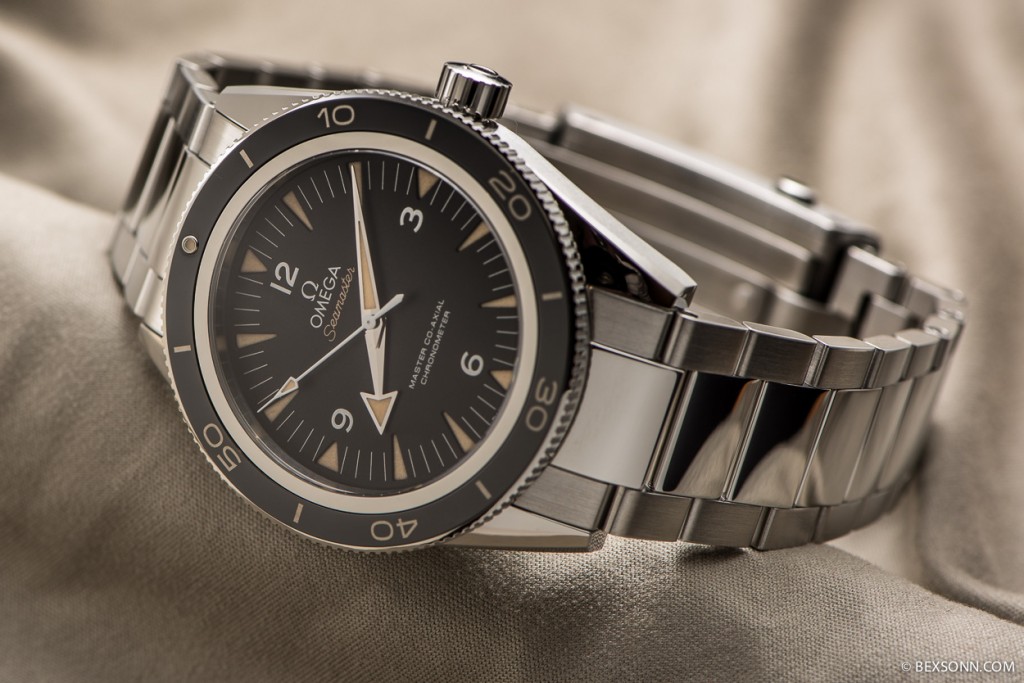 Omega Seamaster 300 Master Co-Axial: One of our first meetings at Baselworld was with Omega. Pre-Baselworld Omega had been busy posting discreet pictures via their Facebook and Twitter accounts. A lot of fans of the brand quickly figured out what it was, including some of whom spoiled the surprise. However, lo and behold we got to see it in the flesh and got our hands on it!
Omega Seamaster 300 Master Co-Axial: One of our first meetings at Baselworld was with Omega. Pre-Baselworld Omega had been busy posting discreet pictures via their Facebook and Twitter accounts. A lot of fans of the brand quickly figured out what it was, including some of whom spoiled the surprise. However, lo and behold we got to see it in the flesh and got our hands on it!
Based on the original Seamaster 300 CK2913 from 1957 (the picture above is a of an Seamaster 300 CK2913 made for the F.A.P, that I took last summer) Omega introduced this awesome new take on a vintage model, the Seamaster 300 Master Co-Axial in various colours and metals. First things first, let’s clear up as to why they’ve called this movement the “Master Co-Axial”. The Master Co-Axial is an evolution of the Co-Axial movement introduced in 2007. In 2013 Omega introduced the > 15’000 gauss movement in the Seamaster Aqua Terra – the Master Co-Axial is a combination of this movement and the original Co-Axial which Omega have introduced in 69 new timepieces with 8 different calibres that will feature this anti-magnetic movement. Not only is the movement anti-magnetic but Omega also boast that it is even more accurate than its predecessors.
The new Seamaster 300 Co-Axial features a beautiful sand-blasted finished ceramic dial with a layer effect, so the hour markers from a distance may seem as if they’re actually protruding from the dial but in fact it is quite the opposite. What is immediately obvious from the teasers and video that Omega published weeks ago was the manufactured patina, which Omega refer to as “vintage” Super-LumiNova. Some may not like this effect and even consider it to be falsified but I think on this occasion it works and only really makes sense. The only thing that lets the dial down a bit is the bright white seconds marker, which does look a little out-of-place in my opinion.
The stainless steel Seamaster 300 features a unidirectional, polished black ceramic bezel ring with Omega’s patented Liquidmetal diving scale. The gold models contain the Omega Ceragold technology for the bezel. This technology allows the growth and bonding of 18 carat gold in ceramic. The symmetrical case (for me) is just on the right side of perfect at 41mm and it features polished lugs with brushed sides that are also in keeping with its 1957 historical predecessor. It would be great in the future to see how this timepiece looks on a NATO strap.
Inside the Seamaster 300 is the calibre 8400 movement (the movement which features a red-gold rotor is the 8401 calibre). This is one of the new 8 calibers that Omega will use from now on and as you can see from the images on the caseback it bears the engraving “Si14”, “ANTI-MAGNETIC”, > 15’000 GAUSS.
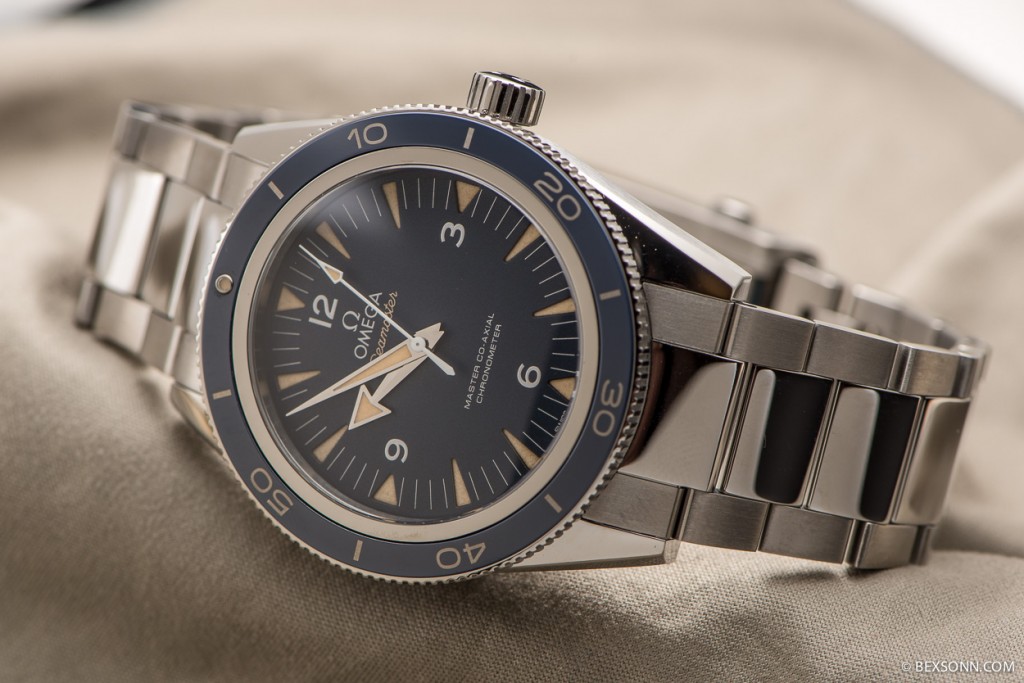 All models have a bracelet with polished centre links and with a patented rack-and-pusher clasp. Omega have managed to produce an easy-to-use re-sizable clasp with 6 different positions. You will only need to open the clasp, press the ‘push’ button and slide the inner clasp to the desired fit.
All models have a bracelet with polished centre links and with a patented rack-and-pusher clasp. Omega have managed to produce an easy-to-use re-sizable clasp with 6 different positions. You will only need to open the clasp, press the ‘push’ button and slide the inner clasp to the desired fit.
The Seamaster 300 comes in 6 different versions. Stainless steel, titanium and various bi-metal combinations: steel/gold, titanium/gold and it is also available in gold and platinum. The stainless steel version with black dial and bezel has a €5000 price tag and the titanium version with blue bezel and dial has a €6000 price tag. For me, this Omega Seamaster 300 was definitely one of the highlights of the show and it has been well priced, offering great value for money.
This timepiece will for sure go down well with Omega fans and watch nerds alike. Omega is onto a winner here. For more information on the Seamaster 300 Master Co-Axial, visit the official website.
Pictures by Bert Buijsrogge of Fratellowatches

